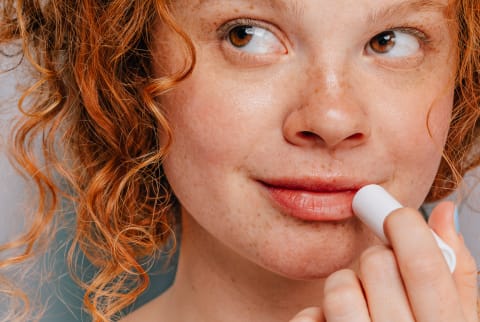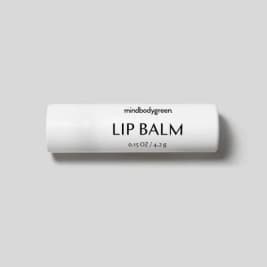What Is Castor Jelly? Meet The New Petroleum Jelly Dupe You're Going To See Everywhere


Lately we've seen a refreshing shift in which brands have started to move away from petroleum jelly and other petrochemicals. Glossier certainly made quite the splash when they announced they were reformulating their original BalmDotcom to be petroleum-free. For a long time, it's been fairly standard practice in clean and natural brands; in fact, in our personal care line we've always dedicated ourselves to being free of mineral oils and fossil fuel byproducts.
Petroleum jelly is an ingredient that inspires a polarizing array of opinions. Some swear by the occlusive balm, using it head to toe, while others call it "toxic" and "unsafe." Bring up the topic on the beauty-centric corners of the internet and it'll certainly pique some interest—and inspire comments.
To be honest, we don't fall into either of those camps. Our take is a touch more nuanced: It's not the star ingredient it's made out to be, but purified, cosmetic-grade petrochemicals are also not outright harmful to skin health like others claim.
We just think it's an outdated ingredient that isn't as exciting or useful as its botanically born alternatives. Why rely on a fossil fuel byproduct when renewable resources are available—and offer the same sensorial appeal and more skin benefits?
One such ingredient dupe is castor jelly, a balmy salve that's growing in popularity in lip balms and other occlusive skin care products. We like it so much that we increased the concentration in our newly reformulated lip balm, which has improved the balm's moisture retention and staying power.
Here's what to know about castor jelly.
What is castor jelly and why is it a petroleum jelly dupe?
Castor jelly—or sometimes called castorlatum—is the gelled version of castor oil. This is created when you emulsify hydrogenated castor oil (called castor wax) and castor oil itself, resulting in a salve-like blend that's thicker than oil but silkier and more malleable than wax.
Indeed, it's becoming known as a petroleum jelly dupe because of the similarities: Petrolatum is a mix of mineral oil and paraffin waxes, making the texture remarkably similar. They also have similar use cases: Both castorlatum and petrolatum can be used as healing ointments or blended with other ingredients to make beauty products (lip products are the most popular).
However, that's where the similarities end. One of the primary differences between the two is sourcing: As we've noted petrolatum comes from mineral oil and is therefore fossil fuel derived. Castor oil is made from the seeds of a perennial flowering plant called Ricinus communis. This key differentiator is why we prefer one over the other: Petrolatum is nonrenewable, and castorlatum is abundantly so.
Skin benefits of castor jelly.
To understand why castor jelly is such a great skin care ingredient, you'll want to look at the laundry list of benefits from the oil itself, which has a long history of use across the world and many cultures.
"Castor oil is rich in unsaturated fatty acids including omega-6 and omega-9 fatty acids. It's high in ricinoleic acid, which is a hydroxylated fatty acid released from castor oil by intestinal lipases. Ricinoleic acid is a unique fatty acid that mediates most of castor oil's beneficial effects in the body and is not found in high concentrations in very many other natural products," board-certified physician Bindiya Gandhi says in our guide to castor oil. "Castor oil is also chock-full of vitamin E, minerals, and proteins."
Let's focus on the Ricinoleic acid, in particular: Research shows that the fatty acid can soothe dry patches of skin1 and help skin recover from irritation; other research suggests it also has anti-inflammatory properties2 for the skin. This makes for a fairly impressive emollient. In addition, the jelly can also act as a humectant, helping attract and hold water in the skin. Finally, vitamin E is a powerful antioxidant that can help reduce free radical damage.
Why we need to move away from fossil fuels in our beauty products.
The answer to why we should do so is simply it's the right thing to do: For the earth, for your skin, and for product integrity. Petroleum jelly is commonly used because it's inexpensive, it has broad name recognition, and it is widely available. But as cosmetic chemist Krupa Koestline once told us, "It's environmentally irresponsible to use mineral oil when there are vegetable and fruit oils that are more sustainable."
Ultimately it's just following this motto: If you can do better, you should do better. It's a saying that helps guide me with our personal care line as we formulate, package, and create these products.
Take, for example, the tube the lip balms are housed in. It's made with a special Eco-Smart Resin© that is 100% recyclable with like materials. This material, however, goes a step further than simply "recyclable": Eco Smart containers are a proprietary technology that enables plastic components to fully break down in biologically active environments. Finally, the formula is made and filled in a factory powered by 100% wind energy. This is as eco-friendly of a lip balm as you can get.
The takeaway.
I suspect that we'll see more and more brands leave mineral oils and fossil-fuel-derived products behind. With innovations like castor jelly and biotech ingredients becoming more mainstream, it's only a matter of time before more folks in the industry see the benefits.

Alexandra Engler is the beauty director at mindbodygreen and host of the beauty podcast Clean Beauty School. Previously, she's held beauty roles at Harper's Bazaar, Marie Claire, SELF, and Cosmopolitan; her byline has appeared in Esquire, Sports Illustrated, and Allure.com. In her current role, she covers all the latest trends in the clean and natural beauty space, as well as lifestyle topics, such as travel. She received her journalism degree from Marquette University, graduating first in the department. She lives in Brooklyn, New York.

